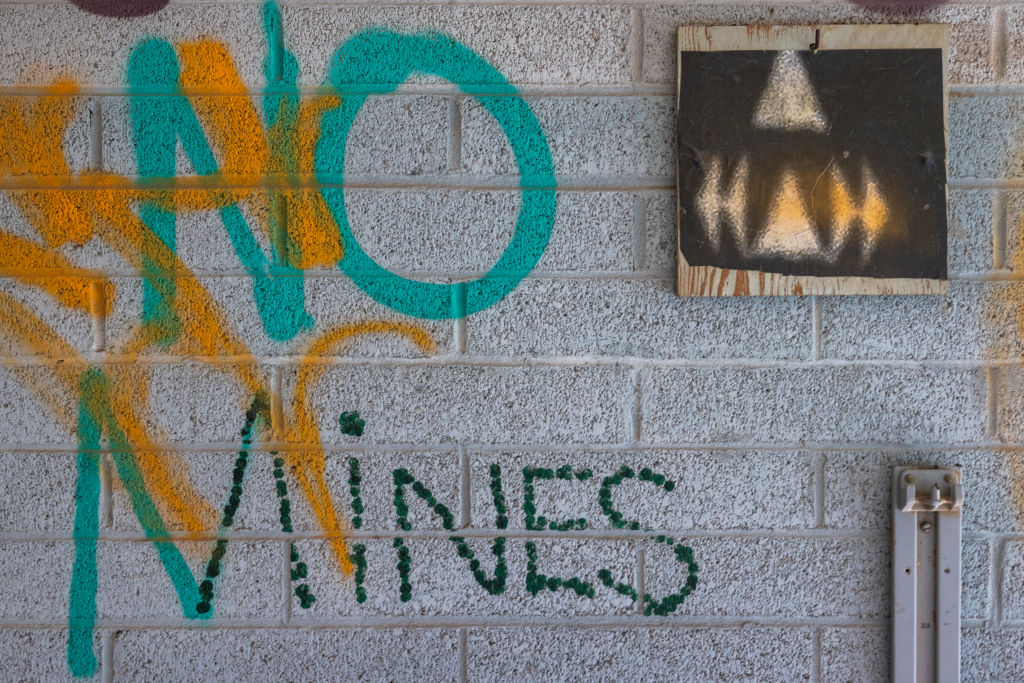Christopher Nolan’s highly-anticipated Oppenheimer comes to the big screen five days after the 44th anniversary of the Church Rock uranium mill spill, when 94 million gallons of radioactive waste poured into the Puerco River, spanning northwestern New Mexico and northern Arizona, and across the Navajo Nation. Children played in the contaminated water, while livestock drank from radioactive aquifers. What came next—cancers, miscarriages, and mysterious illnesses—is a direct consequence of America’s race for nuclear hegemony. It’s an accomplishment built on top of the bodies of Navajo men, women, and children—the lived experience of nuclear weapons development in the United States. But, as usual, Hollywood chose to gloss over them.
The Navajo people cannot afford to be, yet again, erased from history. Hollywood has a lot of work to do, and they can start by standing with the Navajo people and urging Congress to provide just compensation for victims of radiation exposure.
As part of this effort, we must all recognize the continued suffering and sacrifice that built the atomic era. From the 1940s to the 1990s, the U.S. used the Navajo Nation to supply them with uranium for the manufacture of nuclear weapons and energy. While ownership of the mines was transferred from the federal government to private companies in 1971, the U.S. failed to enforce proper safety standards, leaving the sites unregulated until 1990 when the last mine closed. More than 500 now abandoned mines cover our land as a result. Miners and their families were kept in the dark about the heinous dangers of radiation exposure, so they went about their daily activities like any other community. Workers drank the mine’s cool spring water, while their wives washed their yellowed work clothes. Families built homes with local rocks and sediment and let their children play for hours on uranium byproducts, including mine debris piles. Despite the U.S. government’s awareness of the risks inherent in uranium mining, most Navajos did not know what radiation was—let alone the danger presented by every second of exposure.
More from TIME
Read More: Without Indigenous History, There Is No U.S. History
Growing up in a community that has an abandoned uranium mine in Red Mesa, Arizona, I witnessed firsthand the heartbreaking and enduring consequences of uranium mining on my people. Despite the passage of the Radiation Exposure Compensation Act (RECA) in 1990, justice remains elusive for Navajo families who have suffered from the devastating and long-lasting health and environmental effects of the uranium mining industry on Navajo land.
While RECA has provided life-saving healthcare coverage for some uranium miners, the legislation’s limited scope has left many Navajo people suffering from radiation exposure without any compensation. The list of diseases covered by the law is, to start, woefully incomplete. Renal cancer, nephritis, and kidney tubal tissue injury are just some of the conditions that were initially excluded because of a lack of available scientific data connecting them to radiation exposure. RECA also excludes Navajo miners employed after 1971 from eligibility for compensation. Yet, the work they did, and the dangers they faced, remained exactly the same.
This is not a problem of the past. As of August 1, 2022, more than 53,804 claims have been filed under RECA. Of those, more than 12% identified as Navajos. Navajo miners and their families suffer a wide variety of cancers and radiation-related illnesses, with new victims regularly diagnosed. Women living near the mines have experienced stillbirths and miscarriages at abhorrent rates and their children carry the physical legacy of the Cold War through developmental delays, chromosomal aberrations, and other birth defects.
The Navajo people have suffered and sacrificed so much, while directly contributing to our country’s post-war pursuit of nuclear superiority. And while our Navajo Code Talkers are esteemed for heroically saving countless lives in the South Pacific during World War II, our uranium miners have largely been overlooked. The only thank-you for their years of patriotic service has been death, disease, and decades of advocacy to recognize their sacrifice.
Time is slipping away for Navajo uranium miners and their descendants, their hopes dangling in the balance. With each passing day, their weary bodies bear the weight of diseases inflicted by their labor; the clock ticks, mercilessly. As they wait for existing claims to be processed and for expanded eligibility through the RECA amendments, their precious time on this earth dwindles, a poignant reminder of the urgent need for justice and compassion.
The legacy of uranium mining on the Navajo is a perpetual blemish on our nation’s history with its Native people, and the disregard of our stories from media and movies like Oppenheimer can’t mean a continued erasure in U.S. policy. Acknowledging the harm done means living up to the intended purpose of RECA: to compensate all those impacted by the harms of the nuclear age. It is only then that my people can begin to heal and our beautiful and sacred land can be restored. We need the world to hear us and provide the justice that has long been denied to our people.
More Must-Reads From TIME
- The 100 Most Influential People of 2024
- Coco Gauff Is Playing for Herself Now
- Scenes From Pro-Palestinian Encampments Across U.S. Universities
- 6 Compliments That Land Every Time
- If You're Dating Right Now , You're Brave: Column
- The AI That Could Heal a Divided Internet
- Fallout Is a Brilliant Model for the Future of Video Game Adaptations
- Want Weekly Recs on What to Watch, Read, and More? Sign Up for Worth Your Time
Contact us at letters@time.com
